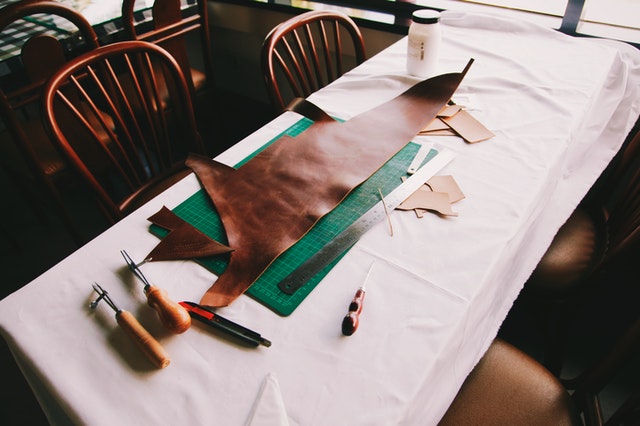Today, many brands produce faux leather products in place of real leather, and people like it. Faux leather is just another name for synthetic or artificial leather. It can be worn as a reliable alternative to genuine leather as it comes in various designs, styles, and patterns.
However, many people are still confused about whether they should go for faux leather or genuine leather. This confusion comes from the fact that faux leather products are cheaper, making people think they might not be as reliable. But in reality, synthetic leather can prove to be better than genuine leather in many ways.
How Is Faux Leather Produced?
Faux leather is manufactured from a plastic base which is then treated with chemicals, wax, polyurethane, or dye to add texture and color. However, there is a wide variety of different production processes that manufacturers use to make faux leather.
Most faux leather we see in the market these days is made with a base textile layered with plastic material. Two of the most common plastics used in synthetic leather production are polyvinyl chloride (PVC) and polyurethane (PU).
Even though these plastics are processed in somewhat different ways, the binding process of the fabrics to these plastics is highly similar.
Advantages of Faux Leather Over Genuine Leather
• The most significant advantage of faux leather is that it’s a much affordable alternative for genuine leather
• Due to its versatile nature, you can have way more options in texture and styles in faux leather. The material can be given a high gloss or matt finish look depending on how it’s polished
• Faux leather is much less maintenance than genuine leather.
• This synthetic material doesn’t tend to crack easily or get stained
• Real leather usually starts fading if you wear it in the sun for long, while faux leather is UV resistant and doesn’t fade quickly
• It is less challenging to create multifaceted pieces with faux leather than genuine leather because it’s easier to work and can be stitched seamlessly. So you will find more colors, designs, patterns, styles than genuine leather products
• Faux leather products are highly durable and can be worn for years without getting ruined
• You can conveniently clean a faux leather product
• The manufacturing process of faux leather is more environmentally-friendly than genuine leather.
How to Repair Faux Leather?
Despite its durability, faux leather, like any other material, might need repair over time. But even after getting a little worn out, they don’t become useless. You can repair your faux leather product with a little effort.
Buy a repair kit from a store. It will provide you with all the tools and instructions you need to repair faux leather. You can smoothen the damaged area with sandpaper and repair it using leather paint of the same color as your product. Finally, polish it in the end for an even look.
Conclusion
If you’re a person who likes to have more choices for a good value of money, faux leather might be your go-to material. It is versatile, durable, and affordable. Moreover, it will always make you feel comfortable. So, don’t shy away from choosing faux leather over real leather any day!

